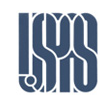Fundamentals of Accelerator Physics and Technology
\(~~~~\) with Simulations and Measurements Lab
Mike Syphers1 and Elvin Harms2
last update: 26 January 2018
Winter 2018 USPAS Session
U.S. Particle Accelerator School, Hosted by Old Dominion University.
15-26 January 2018, in Hampton, VA.
Team: 
- Mike Syphers, Northern Illinois University and Fermilab
- Elvin Harms, Fermi National Accelerator Laboratory
- Kent Wootton, SLAC National Accelerator Laboratory
- Karie Badgley, Fermi National Accelerator Laboratory
- David Tarazona, Michigan State University and Fermilab
Purpose and Audience
The purpose of this course is to introduce the students to the physics and technology of particle beam accelerators. This course is suitable for last year undergraduate students or students from other fields considering accelerator physics as a possible career. This course also can provide a broader background to engineers and technicians working in the field of accelerator technology.
Prerequisites
Credit-seeking students: Courses in special relativity (at level of French, “Special Relativity,” or Resnick, “Special Relativity”), classical mechanics (lower division level), and electrodynamics (at level of “Introduction to Electrodynamics” by David J. Griffiths) at a junior undergraduate level or higher.
Audit-only students: Courses in College Physics and first year Calculus.
It is the responsibility of the student to ensure that he or she meets the course prerequisites or has equivalent experience.
Objectives
This introductory course tries to avoid heavy mathematical treatment and will focus on the fundamental principles of particle accelerators and beam dynamics. Fundamental physics and technologies of particle acceleration are explored, with emphasis on basic relationships, definitions, and applications found in the field of particle accelerators. On completion of this course, the students are expected to understand the basic workings of accelerators and their components. Furthermore, they will comprehend basic principles and definitions of beam dynamics and will be able to analyze experimental observations in terms of fundamental beam dynamics.
Instructional Method
This course includes a series of lectures during morning sessions, followed by afternoon laboratory sessions, which will introduce students to computer simulations and provide hands-on exploration of magnets, radio-frequency cavities, particle beam instrumentation and measuring devices, as well as exercises in particle motion and stability. Problem sets will be assigned which will be expected to be completed outside of scheduled class sessions. Two instructors will be available at all times.
Course Content
Introductory material will include discussions of classical dynamics and relativity, synchrotron radiation, the historical development of accelerators, and uses of particle accelerators. Basic components such as bending and focusing magnets, electrostatic deflectors, and radio frequency accelerating structures will be described. Comparisons between hadron and electron accelerators will be presented, and examples of modern accelerator facilities discussed as well as state-of-the-art accelerator R&D.
Reading Requirements
A hardbound copy of the textbook, An Introduction to the Physics of High Energy Accelerators, Wiley Publishers (1993) by D.A. Edwards and M.J. Syphers (Edwards and Syphers 1993), will be provided by the school during check-in. The textbook can also be found online. If the student’s institution has an agreement with Wiley Publishers, it may be possible to download a pdf of the textbook ahead of the school. The student may also want to read “An Introduction to Particle Accelerators,” Oxford University Press (2001) by E.J.N. Wilson (Wilson 2001).
The flow of the course will not follow either text directly, but cross-references between daily material and sections of the above textbooks are provided in the Suggested Reading section of the web site.
Grading Policy
Seven homework sets will be expected from each student as described below. The homework will count for approximately 35% of the total grade. Eight Laboratory/Computer Sessions will be held and are also described below. Assignments from these sessions will count for approximately 35% of the total grade. A Final Exam will be held the morning of the last day of class, which is worth approximately 30% of the final grade.
Homework Problems
The student will be expected to turn in all problems from the list provided. Each assignment contains 3 to 4 problems to be solved. Homework is due before 9:00 a.m each due date.
Lab/Computer Sessions
During the afternoons and evenings, according to the syllabus, students have access to laboratory equipment and PCs for hands-on measurements and simulations. Worksheets will be provided with questions to be completed and turned in. Due to the number of students and limited amount of equipment, students will work in teams and rotate through each of the lab stations and computers according to the schedule provided. Each worksheet is expected to be turned in at the beginning of the lab period, two days after the lab was originally scheduled. The final lab will be due Friday morning of the second week. The classroom will be open in the evenings for Hardware AND Computer lab work. The USPAS Computer Lab will also be available in the evenings, though shared with other classes.
References
Edwards, D.A., and M.J. Syphers. 1993. An Introduction to the Physics of High Energy Accelerators. 2nd ed. New York, New York: Wiley. http://onlinelibrary.wiley.com/book/10.1002/9783527617272.
Wilson, Edmund. 2001. An Introduction to Particle Accelerators. Oxford: Oxford University Press. http://www.oxfordscholarship.com/view/10.1093/acprof:oso/9780198508298.001.0001/acprof-9780198508298.